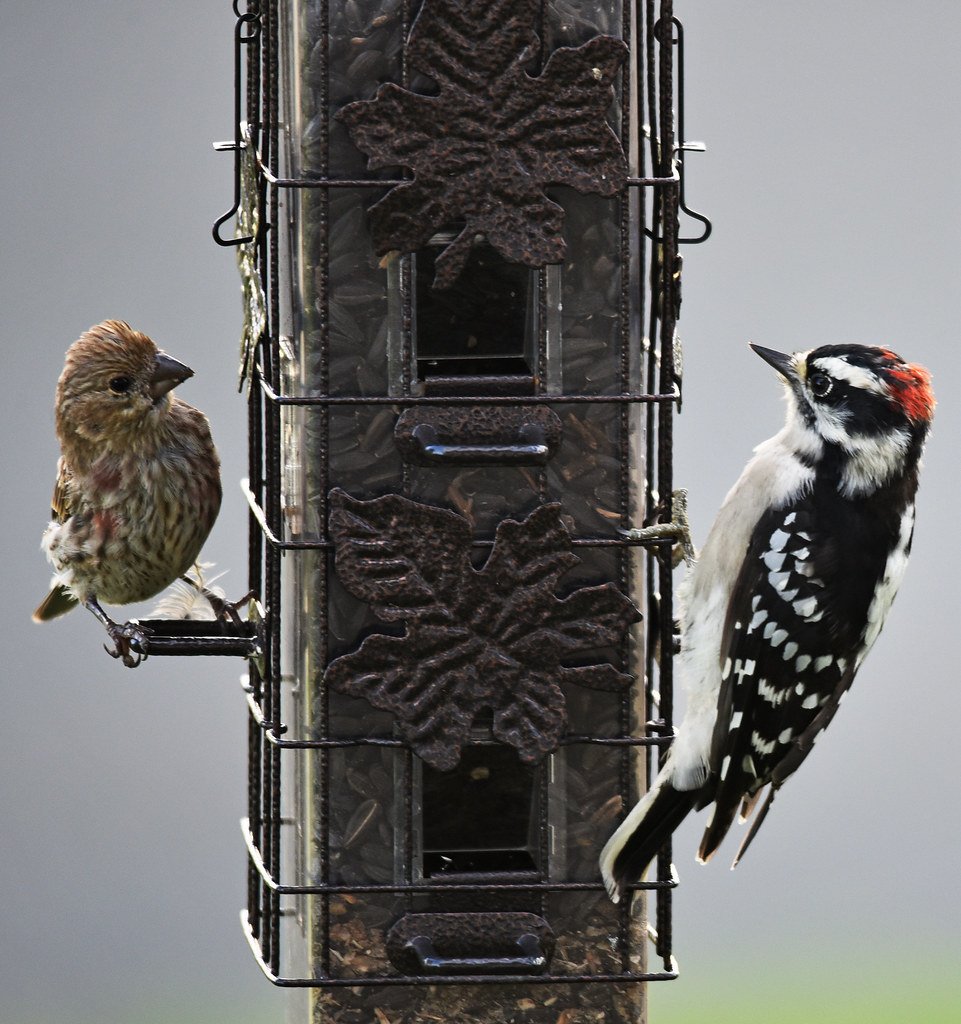Breakfast for the Birds
On recent winter walks,
I have noticed cereal, bread slices and waffles (yes, you read that correctly) cast on the ground for songbirds and waterfowl to eat. This type of food typically has little to no nutritional value for birds and, depending on the type of cereal or baked good, may even be harmful. During the winter months, birds use up an incredible amount of energy as they attempt to stay warm and search for food. According to Wild Birds Unlimited (WBU), songbirds can use up to 75-80% of their fat reserves in a single winter night. As WBU notes, “This is equivalent to 10% of their body weight being shed and replaced every day as they consume, store and utilize their body fat. This is comparable to a 200lb person losing and then gaining back 20lbs of fat every 24 hours!”
It is imperative that these birds replenish their lost fat with high quality caloric foods. One way to do this is through the provision of suet, and certain seeds and nuts in our gardens (different birds will be drawn to specific seeds/nuts depending on their species). Another, and more ecologically advantageous, way is through planting native plants in our landscapes. Native plants play an integral role in providing a natural source of food for birds during the winter through their various seed heads. For example, a garden with switchgrasses and other native grasses will attract and feed the migratory dark-eyed juncos. Serviceberries (whether in shrub or tree form) will draw cardinals to your garden, and asters and conifer seeds attract finches. (See the Audubon link in the Resources for more native plant-bird relationships).
With native plants, therefore, it is important not to “winterize” the garden too early by cutting back the supposedly “dead” foliage as they provide an integral, healthy food source for the songbirds. An added advantage of providing food through native plants is that it avoids the issues of bacteria and other harmful substances that may build up in or around bird feeders that are not cleaned regularly (which, in turn, can sicken birds and lead to their deaths). So the next time you are enjoying birdsong, or pausing in awe at the color of the blue jay or cardinal, consider how you might be able to provide locally sourced, natural food for them through the inclusion of native plants in your garden.
Resources:
Machemer, Theresa. 2021. “Songbirds Are Spreading a Deadly Disease at Birdfeeders.” The Smithsonian Magazine. Available at: https://www.smithsonianmag.com/smart-news/songbirds-are-spreading-deadly-disease-birdfeeders-180977222/.
Slavin, Zach. 2017. “Grow These Native Plants So Your Backyard Birds Can Feast.” National Audubon Society. Available at: https://www.audubon.org/news/grow-these-native-plants-so-your-backyard-birds-can-feast.
Wild Birds Unlimited, Lisle. No date. “Helping Birds Survive Winter Nights.” Available at https://lisle.wbu.com/.

